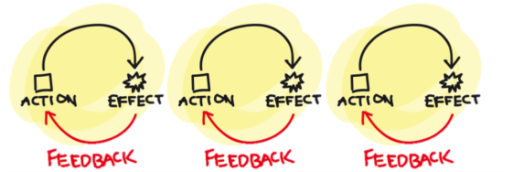 Achieving a goal often requires you repeat certain actions, like going to the gym. A common problem is “The Planning Fallacy,” which is a psychological bias where we tend to overestimate what we can accomplish or underestimate the resources we will require for success. The 2-4 rule is one way to deal with this bias, by establishing an artificial trigger you can use to help monitor and adjust, establishing what frequency and intensity works best for you. The key is finding a good balance. The way the 2-4 rule works is simple. After establishing your actions, if you fail to hit any of your targets two weeks in a row then you might be over extending yourself. This should trigger a reevaluation of your targets, reducing what you believe you can accomplish in a given week. On the other hand, if you hit all of your targets four weeks in a row you may not be challenging yourself enough. This should also trigger a reevaluation, increasing your targets. For example, in an effort to get in better shape you may set a target of going to the gym four times a week for a 30 minute session. If after two weeks you only made it to the gym three times, instead of your targeted eight times, then using the 2-4 rule you would lower your target for the next two weeks. If you have hit all eight sessions, then you may want to consider increasing the frequency, duration, or intensity of your workouts. While I have personally adopted the 2-4 rule as it works for me, there is nothing that stops you from adopting a 3-6 or 2-5 rule. It all depends on the nature of the goal and what works for you. I recommend trying a few different combinations. You can even try different rules for each goal, but I like simplicity so it is rare for me to deviate from using the 2-4 combination. Using the 2-4 rule within a period of a few months you should have a good idea of what you really can accomplish in a given week. Certainly things will change slightly as you improve, the holiday season hits or a life event happens, but using the 2-4 rule gives you a concrete way to deal with our hard-wired tendency to over plan and underperform. Thanks for reading: For a FREE 30-minute course on setting and achieving goals, visit https://www.udemy.com/goal-setting/
0 Comments
Your comment will be posted after it is approved.
Leave a Reply. |
Authors
Richard Feenstra is an educational psychologist, with a focus on judgment and decision making.
(read more) 
Bobby Hoffman is the author of "Hack Your Motivation" and a professor of educational psychology at the University of Central Florida.
(read more) Archives
April 2023
Categories |

 RSS Feed
RSS Feed
